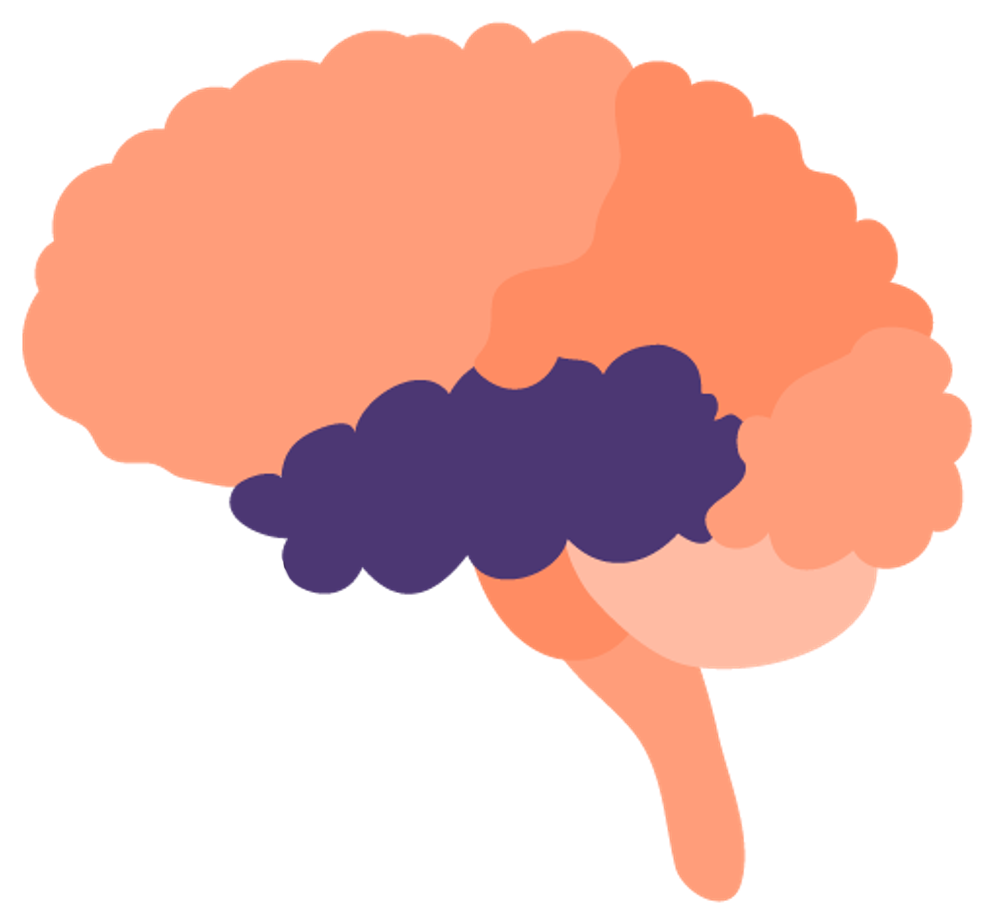Regions of the Brain and What They Control
The brain helps us understand the world around us and communicate with the rest of our body. It communicates through networks of neurons (brain cells). These communication channels and the ability to understand and use information from the body can be disrupted when someone has a stroke.
The brain is very complex, so how a stroke affects each person is different. The effects of the stroke can depend on the severity, type, and location of the stroke. You can understand what you might experience after a stroke by understanding what each brain region does.
The largest part of the brain is called the cerebrum, and each side is called a hemisphere.
You might experience these effects if you have a stroke on the left side of your brain.
- Difficulty or inability to move the right side of your body
- Changes in how your body feels on the right side
- Losing the ability to see things on the right side
- Trouble speaking
- Difficulty understanding what someone is saying
- Challenges with reading and writing
- Difficulty learning new things
- Tendency to be overly cautious
You might experience these effects if you have a stroke on the right side of your brain:
- Difficulty or inability to move the left side of your body
- Changes in how your body feels on the left side
- Not being aware of the left side of the body
- Losing the ability to see things on the left side
- Trouble reading maps and navigating
- Difficulty understanding how far or close objects are
- Not being able to find everyday objects, like your clothes
- Difficulty recognizing parts of your own body
- Tendency to be more impulsive or inappropriate
The cerebrum has four main lobes or regions. The images below show the different actions each area controls.

Thinking, memory, behavior, and movement
Frontal Lobe
If you have a stroke in your frontal lobe, the large lobe in the front of your brain, you may have:
- Difficulty thinking and making decisions
- Trouble moving
- Changes in personality and behavior

Language and touch
Parietal Lobe
If you have a stroke in your parietal lobe, you may have:
- Changes in feeling touch and pain
- Difficulty speaking and understanding speech
- Trouble with movement and, knowing where your body is and determining the right versus left side of your body

Vision
Occipital Lobe
If you have a stroke in your occipital lobe or near the back of your brain, you may have:
- Lost the ability to see anything on the right or left side with your eyes when you are not moving your head (Homonymous hemianopia)
- Difficulty understanding what you are looking at (visual agnosia) or recognizing familiar faces (prosopagnosia)
- Partial loss of vision or black spots
- Difficulty reading
- Complete blindness or the inability to see colors in rare instances

Hearing, learning, and feelings
Temporal Lobe
If you have a stroke in your temporal lobe or the area around your ears, you may have:
- Memory difficulties
- Trouble understanding and learning
- Changes in how you feel (emotions)
Underneath the cerebrum are two more regions of the brain, the cerebellum and the brain stem.

Cerebellum
Balance and coordination
The cerebellum is important for movement because it gets signals from the spinal cord, which helps the body control movements. You might experience these effects if you have a stroke in your cerebellum:
- Trouble with smooth and accurate movements (coordination)
- Difficulty with balance and walking
- Potential headaches, dizziness, and nausea

Brain Stem
Breathing, heart rate and temperature
Your brain stem regulates your breathing, heartbeat, body temperature, blood pressure, and more. The brain stem is associated with the necessary functions for life. You might experience these effects if you have a stroke in your brain stem:
- Trouble with smooth and accurate movements (coordination)
- Difficulty with balance and walking
- Potential headaches, dizziness, and nausea
Strokes in any brain region can affect thinking, memory, mood, and movements. Seizures and epilepsy may also occur after certain types of strokes and are more likely to occur if you have a stroke in the outer layer of the brain (cerebral cortex) or if you had bleeding in your brain (hemorrhagic stroke).
While the general stroke effects associated with each brain region are listed above, each person may have different experiences or effects not listed above.
We encourage you to share any symptoms you are experiencing with your Kandu Navigator so they can help you address them. Your navigator will help you understand what type of stroke you had and how it may be impacting your brain. They will provide you with strategies on how to manage your stroke impairments and connect you to rehabilitation resources specific to your health.




